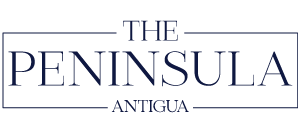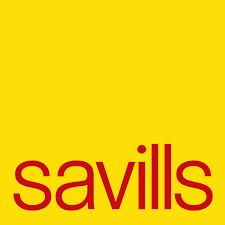- about antigua
Antigua and Barbuda, a twin island independent Nation, is located at 17N 61W, at the centre of the arc of the island chain known as the Leeward Islands, in the eastern Caribbean. Antigua and Barbuda boasts 365 beaches, one for each day of the year. Antigua Island is 108 square miles (280 sq. km.) and Barbuda is 65 square miles. The combined population is approaching 100,000. There has been a 25% growth in population due mainly to opportunity presented by increasing Tourism and to the building and construction sector. Most of the growth comes from within the Caribbean Community, CARICOM, which allows for free movement of qualified persons seeking work.
Temperatures range from 24C (76F) to 30C (86F). Due to it’s small size and relative flatness, Antigua and Barbuda are cooled by an ever present Easterly Trade Winds over a relatively constant cool ocean, averaging year round at approximately 24C (76F). August and September, with calmer wind conditions tend to be the warmest months, while December, January and February with the higher Christmas winds, are the coolest. These trade winds, cooled by the ocean, maintain low humidity for comfortable year round living.
Water, Electricity, Telephones and Internet: Rainfall is heaviest from July to October when the ponds, Pot Works Dam and cisterns are replenished. All buildings by law must have a minimum of 10 gallon storage in cistern capacity for each sq. ft. of roof area. Antigua and Barbuda, surrounded by crystal clear and clean salt water with reverse osmosis water plants, should have no shortage of water. These plants operated by the APUA the Utility Company, most seaside hotels and ocean front properties currently provide adequate fresh water. Many homes are utilizing solar panels for electricity and hot water heaters. One such significant solar farm can be seen at the end of the airport runway. Cellular phones and Wi Fi availability are standard, with a variety of providers to choose from.
The official language is English. Spanish and French are included in the school curricula. There are over 5,000 persons from the Dominican Republic whose mother tongue is Spanish.
The majority of the population are of African descent. Most are born in Antigua but since 1955, a large number have emigrated from other Caribbean countries to Antigua and Barbuda. Similarly over the years the Antigua diaspora in North America, the UK and Europe has increased exponentially as Antiguans sought to improve their education and quality of life. While some return many have integrated into these adopted countries. It is estimated that there are 7 times more Antiguans living abroad than live in Antigua. This represents a good source of funds sent home to assist families and to invest in our growing economy. The Antiguans return for our major events such as cricket, carnival, family celebrations and visits. They are an important part of our tourist industry. Antigua in turn over the past 60 years has become very cosmopolitan. Many Europeans including Italian, Dutch, French, German, Austrian and Scandinavian are living and working here. Venezuelan, Japanese and Chinese have a growing presence and population. The Lebanese, Syrian and Portuguese community has had a presence in Antigua for well over 100 years and have contributed significantly to Antigua and Barbuda. Residential Tourism, business opportunity, the Citizenship Investment Programme, immigration from the neighbouring French, Spanish and Dutch Islands and the growing Health Science Universities, is contributing to the change to a more diverse cosmopolitan population.
The Eastern Caribbean Dollar, is linked to the US dollar at the official exchange rate of US $1.00 = EC $2.68. However the US$ is frequently accepted, as are credit cards and debit cards. There are ample ATM’s located conveniently around Antigua through which EC$’s are available. Antigua has several International and Local banks. For investors wishing to open a bank account, be advised to travel with identification, in addition to bank and other necessary references. As is the case elsewhere, Money laundering regulations are forcing the banks to be cautious and vigilant.
Although it is claimed that Antigua was discovered by Christopher Columbus in 1493, he never landed here, yet he named the island after the Santa Maria La Antigua church in Seville, Spain. The British were the first Europeans to establish a settlement in 1632 and, except for a brief period, when the settlement was occupied by the French, Antigua and Barbuda remained a British colony until granted independence on November 1, 1981.
Antigua boasts a new state of the art International Airport with efficient baggage handling, porters, ticket operations and clearing in and out services from Customs and Immigration. There are direct flights from North America and Europe. The Antiguan Government is aggressively increasing the services internationally and for services between islands. A wide variety of motorized vehicles are available for rental. Taxis are available at the airport, cruise ship terminals and at hotels, Nelson’s Dockyard and all marinas. The rates are set by the Taxi Association and the government but one can negotiate before the trip commences.
Developed as a base for the British Navy in the great age of sail, the harbour served as the headquarters of the British fleet of the Leeward Islands during the turbulent years of the late 17th century. The Naval Yard and very safe, well-fortified and protected Harbour was the base of operations for Nelson’s Fleet and credited for his many victories prior to Trafalgar since it afforded services and repairs not available to the French. The Dockyard was essentially abandoned in the 19th century and was closed in 1889. Nelson’s Dockyard has been restored over time. This restoration continues. Nelson’s Dockyard is the only operational Georgian dockyard in the world and is the centre for the Caribbean Yachting Fleet. English Harbour is surrounded by fortifications such as Fort Shirley (Shirley Heights), Fort George (Monk’s Hill) and other somewhat neglected but partially restored fortifications which provide visitors a glimpse at the harbour’s historical past.
Popular with visitors and residents, Shirley Heights provides visitors with vistas and views over spectacular sunsets.The neighbouring islands of Guadeloupe, Montserrat, and Redonda provide a backdrop to these vistas, especially on Sunday evenings when Shirley Heights hosts a barbeque, with live steel band and reggae music.
Antigua is a major yachting centre. It is the Caribbean base to many Charter and private yachts. The Antigua Yacht Club annually hosts major International yachting events: The RORC Caribbean 600 in January, Antigua Classics in April, followed by Antigua Sailing Week in late April and early May. Visitors and residents can participate in the many but less publicized yachting events. Beginner and advanced sailing instructions are offered by some of the hotels or in English Harbour, Jolly Harbour and Nonsuch Bay.
Antigua and Barbuda are famous for beaches, crystal clear waters, and a plethora of water based activity – snorkelling, diving, Sting Ray City, Ocean kayaking, wind and kite surfing, sailing, stand up boarding and adventure water tours by power or sail boats. The Spring Hill Equestrian Centre provides lessons in Dressage, and show jumping as well as trail rides. Tennis, squash,racket ball and golf are available. The hiking trails are well marked and scenic. Hikes through historic English Harbour and the rain forest are especially popular. The Antigua Hash House Harriers meet every other Saturday at different and interesting hiking and running venues.


